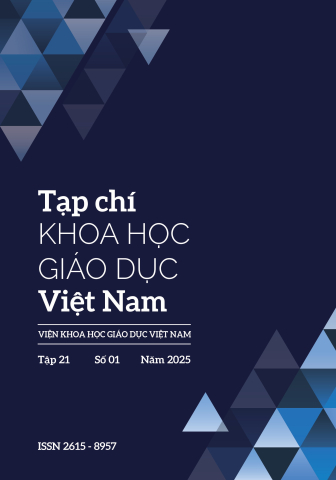[1] Ally, MR, (2013), Mobile learning: From research to practice to Impact Education, Learning and Teaching in Higher Education, Gulf Perspectives, 10(2), http://lthe. zu.ac.ae/index.php/lthehome/article/view/140/62.
[2] Anderson, T, (2003), Modes of interaction in distance education: Recent developments and research questions, In M. Moore (Ed.), Handbook of Distance Education, p.129-144.
[3] Ahmad, N., Bull, S, (2009), Learner Trust in Learner Model Externalisations, In: Dimitrova, V., Mizoguchi, R., du Boulay, B., Graesser, A. (eds.), Artificial Intelligence in Education. IOS Press, Amsterdam, Google Scholar
[4] Bruner, J. S, (1961), The act of discovery, Harvard Educational Review, 31, 21-32.
[5] Bull, S., Britland, M, (2007), Group Interaction Prompted by a Simple Assessed Open Learner Model that can be Optionally Released to Peers, In: Brusilovsky, P., Papanikolaou, K., Grigoriadou, M. (eds.) Proceedings of Workshop on Personalisation in E-Learning Environments at Individual and Group Level (PING), User Modeling,
[6] Bull, S., Mabbott, A., Gardner, P., Jackson, T., Lancaster, M., Quigley, S., Childs, P.A, (2008), Supporting Interaction Preferences and Recognition of Misconceptions with Independent Open Learner Models, In: Nejdl, W., Kay, J., Pu, P., Herder, E. (eds.) AH 2008. LNCS, vol. 5149, pp. 62–72. Springer,
[7] Cookson, P, (2015), Creating online courses stepby-step, In B. Khan & M. Ally (Eds.), International handbook of E-learning: Theoretical perspectives and research (Vol 1), New York: Routledge.
[8] Dostál, J, (2009), Educational software and computer games - tools of modern education, Journal of Technology and Information Education, Palacký University, Olomouc. 1 (1).
[9] Mitrovic, A., Martin, B, (2007), Evaluating the Effect of Open Student Models on Self-Assessment, International Journal of Artificial Intelligence in Education 17(2), 121–144.
[10] Piajet J, (1954), The Construction of Reality in the Child, Paris.


